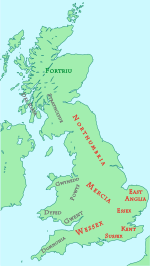Travel to Sussex Map
Sussex tourist guide map of landmarks & destinations by Walkfo
14
travel
spots
![]() When travelling to Sussex, Walkfo’s has created a travel guide & Sussex overview of Sussex’s hotels & accommodation, Sussex’s weather through the seasons & travel destinations / landmarks in Sussex. Experience a unique Sussex when you travel with Walkfo as your tour guide to Sussex map.
When travelling to Sussex, Walkfo’s has created a travel guide & Sussex overview of Sussex’s hotels & accommodation, Sussex’s weather through the seasons & travel destinations / landmarks in Sussex. Experience a unique Sussex when you travel with Walkfo as your tour guide to Sussex map.
Sussex history
Beginnings
Boxgrove Man or Homo heidelbergensis is the earliest hominid remains in Europe dating back 500,000 years. The thriving population lived by hunting game such as horses, bison, mammoth and woolly rhinos. Sussex is rich in Bronze Age barrows known as the Devil’s Jumps and Cissbury Ring, one of Britain’s largest hillforts.
Roman canton

Much of Sussex was a Roman canton of the Regni, probably taking a similar area to the pre-Roman tribal area and kingdom. The Romans were called to restore the refugee Verica, a king whose capital was in the Selsey and Chichester area. Sussex was home to the magnificent Roman Palace at Fishbourne, by far the largest Roman residence known north of the Alps.
Saxon kingdom

The foundation legend of Sussex is provided by the Anglo-Saxon Chronicle. It seems Ælle secured the area between the Ouse and Cuckmere in a treaty. By the 7th century at the latest the South Saxon kings were ruling from sites around Selsey, the pre-Roman capital of the area.
Norman Sussex

Battle of Hastings was fought in Sussex, the victory that led to the Norman conquest of England. William of Normandy landed with his forces at Pevensey and erected a wooden castle at Hastings, from which they raided the surrounding area. Sussex experienced some of the greatest changes of any English county under the Normans.
Sussex under the Plantagenets
Sussex Downs were the location of the Battle of Lewes in 1264, in which Simon de Montfort and his fellow barons captured Prince Edward (later Edward I), the son and heir of Henry III. Sussex found itself on the frontline during the Hundred Years’ War. Hastings, Rye and Winchelsea were all burnt during this period and all three towns became part of the Cinque Ports, a loose federation for supplying ships for the country’s security.
Early modern Sussex
The Wealden iron industry expanded rapidly, especially after the first blast furnace arrived in Sussex 1496, from the Low Countries. Skilled Flemish workers moved to Sussex, followed again by Huguenot craftsmen from France, who brought new techniques. Under Elizabeth I, religious intolerance continued albeit on a lesser scale, with several people being executed for their Catholic beliefs.
Late modern and contemporary Sussex
Sussex had the highest poor law rates in England, with 37,000 people living on the breadline. Sussex became a centre for radicalism, with Thomas Paine developing his political ideas in Lewes. During World War I, the Royal Sussex Regiment took part in the Battle of the Boar’s Head at Richebourg-l’Avoué.
Sussex map & travel guide with history & landmarks to explore
Visit Sussex Walkfo Stats
With 14 travel places to explore on our Sussex travel map, Walkfo is a personalised tour guide to tell you about the places in Sussex as you travel by foot, bike, car or bus. No need for a physical travel guide book or distractions by phone screens, as our geo-cached travel content is automatically triggered on our Sussex map when you get close to a travel location (or for more detailed Sussex history from Walkfo).
| Travel Location: Travel Area: | Sussex [zonearea] | Audio spots: Physical plaques: | 14 1 | Population: | [zonesize] |
|---|
Average seasonal temperatures at zone
Tourist Guide to Sussex Map
Sussex map historic spot | Sussex map tourist destination | Sussex map plaque | Sussex map geographic feature |
| Walkfo Sussex travel map key: visit National Trust sites, Blue Plaques, English Heritage locations & top travel destinations in Sussex | |||